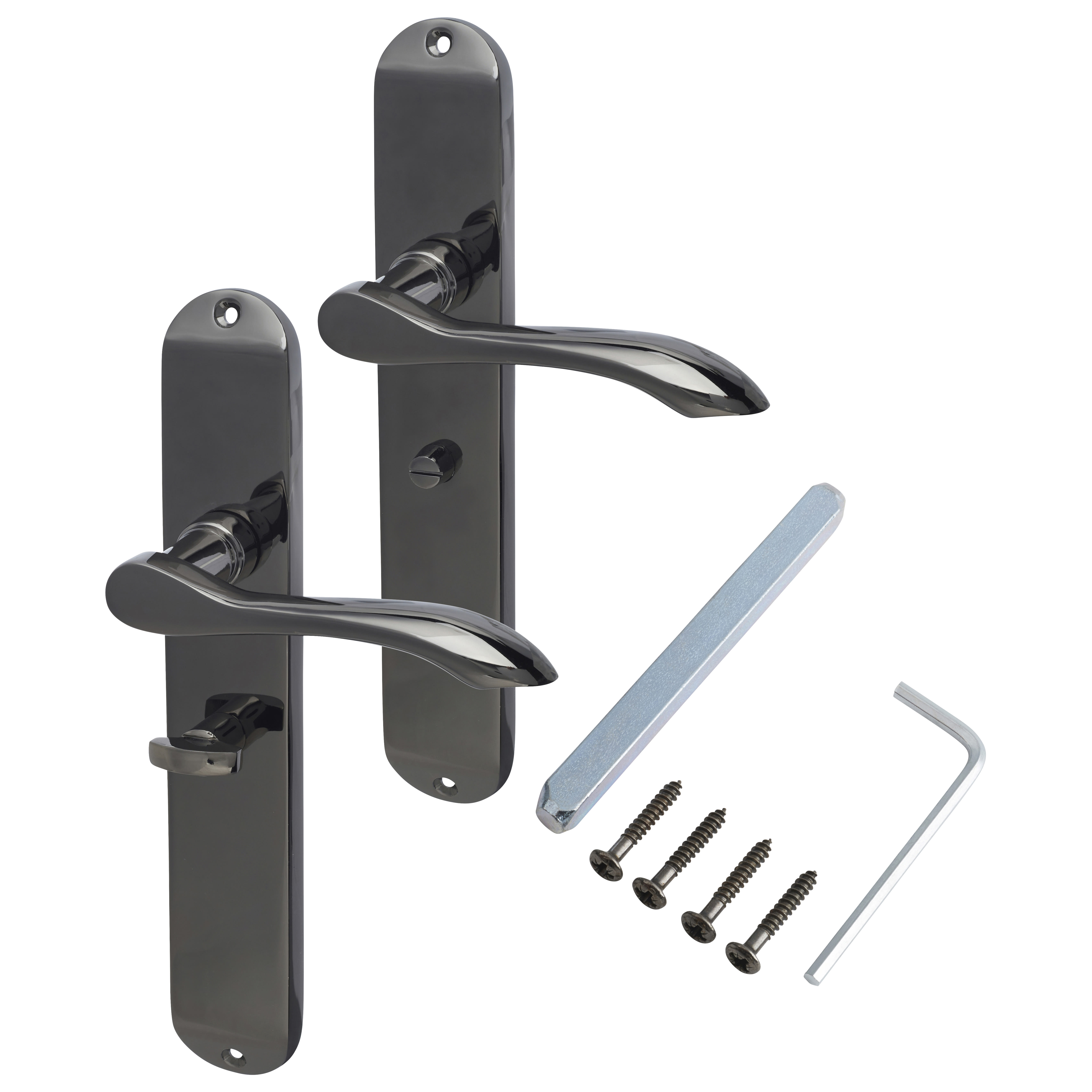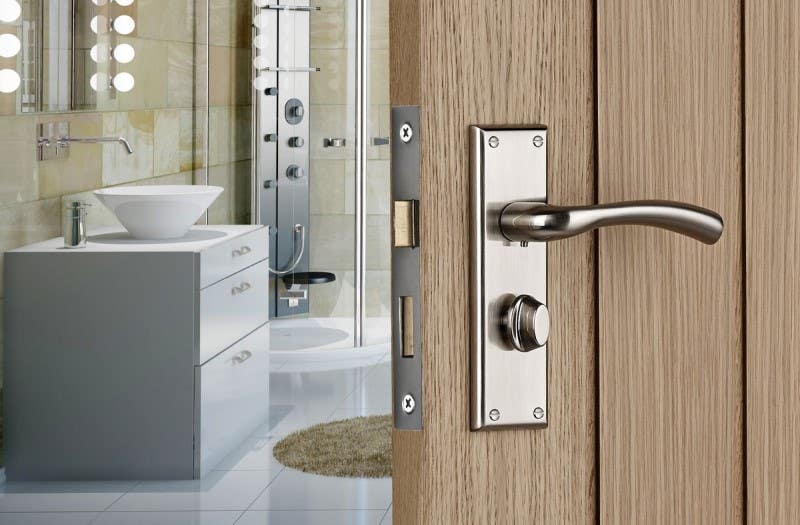The Rise of Touch-Free Technology

The demand for touch-free solutions has surged in recent years, driven by a growing awareness of hygiene and the need to minimize contact in public spaces. This shift is particularly evident in the realm of bathroom door handles, where touch-free technology has emerged as a practical and effective solution.
Health and Hygiene Benefits
Touch-free bathroom door handles offer a compelling advantage in promoting health and hygiene. They eliminate the need for direct contact with surfaces that can harbor germs and bacteria, reducing the risk of cross-contamination. This is particularly important in high-traffic areas such as restrooms, where numerous individuals may use the same door handle.
The Centers for Disease Control and Prevention (CDC) emphasizes the importance of hand hygiene in preventing the spread of infections. Touch-free door handles align with these recommendations by minimizing contact points and promoting a cleaner environment.
Types of Touch-Free Bathroom Door Handles: Touch Free Bathroom Door Handle

Touch-free bathroom door handles offer a hygienic and convenient solution for accessing restrooms, especially in high-traffic areas like public spaces and healthcare facilities. These handles eliminate the need for direct contact, reducing the spread of germs and enhancing user comfort. Different types of touch-free door handles cater to various needs and environments, each with its unique features and applications.
Automatic Door Handles
Automatic door handles, also known as power-assisted handles, utilize a motor-driven mechanism to open and close the door. These handles are typically integrated with a sensor system that detects the presence of a user and initiates the opening or closing action.
- Functionality: Automatic door handles provide hands-free access, offering convenience and accessibility for individuals with mobility limitations. The motor-driven mechanism ensures smooth and effortless door operation, reducing the physical effort required to open or close the door.
- Advantages: Automatic door handles offer enhanced hygiene by eliminating direct contact with the handle, reducing the risk of germ transmission. They are particularly beneficial in high-traffic areas where frequent door usage can lead to increased contamination. Additionally, these handles provide accessibility for individuals with disabilities or limited mobility.
- Limitations: Automatic door handles require a power source for operation, which can be a consideration in areas without readily available electricity. They can also be more expensive to install and maintain compared to other types of touch-free handles. Furthermore, the motor-driven mechanism can create noise, which may be a concern in quiet environments.
- Examples: Some notable manufacturers of automatic door handles include Dorma, GEZE, and ASSA ABLOY.
Sensor-Based Door Handles
Sensor-based door handles utilize a sensor system to detect the presence of a user and trigger the door opening mechanism. These sensors can be activated by various methods, including motion detection, infrared beams, or pressure plates.
- Functionality: Sensor-based door handles offer hands-free access, providing a hygienic and convenient solution for opening doors. The sensor system activates the door opening mechanism, eliminating the need for physical contact with the handle.
- Advantages: Sensor-based door handles are known for their hygienic benefits, as they reduce the risk of germ transmission by eliminating direct contact with the handle. They are also energy-efficient, as the door opening mechanism is only activated when a user is detected.
- Limitations: The sensitivity of the sensor system can be affected by factors such as ambient light, temperature, and the presence of objects near the sensor. This can sometimes lead to false activations or failures to detect a user. Additionally, the installation and configuration of sensor-based door handles may require specialized expertise.
- Examples: Some popular manufacturers of sensor-based door handles include Allegion, Schlage, and Kwikset.
Push-to-Open Door Handles
Push-to-open door handles operate on a simple mechanism that requires a user to push the handle to open the door. These handles are typically equipped with a spring-loaded mechanism that provides resistance to the push, ensuring the door remains closed until activated.
- Functionality: Push-to-open door handles provide a touch-free solution for opening doors, requiring minimal effort from the user. The spring-loaded mechanism ensures the door remains closed until a user pushes the handle, preventing accidental openings.
- Advantages: Push-to-open door handles are relatively inexpensive to install and maintain compared to automatic or sensor-based handles. They are also simple to operate, requiring no specialized knowledge or training. Additionally, these handles are generally quiet and do not require any power source.
- Limitations: Push-to-open door handles do not provide automatic opening functionality, requiring the user to apply a pushing force to open the door. This can be challenging for individuals with limited mobility or strength. Additionally, the spring-loaded mechanism can sometimes become worn or lose its effectiveness over time, requiring replacement or adjustment.
- Examples: Some manufacturers of push-to-open door handles include Stanley, Yale, and Baldwin.
Installation and Maintenance

Installing and maintaining touch-free bathroom door handles is crucial for ensuring their functionality and longevity. The process is straightforward, requiring basic tools and understanding of the installation steps. Regular maintenance is essential to prevent malfunctions and extend the life of the handles.
Installation Process
Installing a touch-free bathroom door handle typically involves the following steps:
- Preparing the Door: Measure the door thickness and determine the appropriate handle size. Ensure the door surface is clean and free of any debris.
- Marking and Drilling: Mark the locations for the handle mounting plates using a pencil. Drill pilot holes using a drill bit slightly smaller than the screws provided with the handle.
- Mounting the Plates: Secure the mounting plates to the door using the screws. Ensure they are securely fastened and aligned.
- Installing the Handle: Slide the handle onto the mounting plates and secure it using the provided screws. Make sure the handle is properly aligned and sits flush against the door.
- Connecting the Power Source: Depending on the type of handle, connect it to a power source, either using batteries or a wired connection.
- Testing and Adjustment: Test the handle to ensure it operates smoothly and responds to touch. Make any necessary adjustments to the sensitivity or activation range.
Maintenance Recommendations, Touch free bathroom door handle
Regular maintenance is crucial for keeping touch-free bathroom door handles in optimal condition. Here are some recommendations:
- Cleaning: Clean the handle regularly using a soft cloth and a mild cleaning solution. Avoid harsh chemicals or abrasive cleaners that could damage the surface.
- Battery Replacement: If the handle uses batteries, replace them when they are low. Refer to the manufacturer’s instructions for battery type and replacement procedures.
- Calibration: Periodically recalibrate the handle to ensure accurate activation and response. This involves adjusting the sensitivity and activation range as needed.
- Troubleshooting: Address any issues promptly to prevent further damage or malfunctions. This might involve checking battery levels, cleaning the sensor, or adjusting the settings.
Troubleshooting Common Issues
Here are some common issues with touch-free bathroom door handles and their potential solutions:
- Handle Not Responding: Check the battery levels, clean the sensor, or adjust the sensitivity settings.
- Handle Responding Erratically: Clean the sensor, recalibrate the handle, or adjust the activation range.
- Handle Not Opening: Ensure the handle is properly installed, check the power source, or troubleshoot any mechanical issues.
Touch free bathroom door handle – Touch-free bathroom door handles are a modern convenience, promoting hygiene and reducing the spread of germs. But before you install one, consider the type of door you have. A solid core door might be more suitable for a touch-free handle, while a hollow core door may require additional reinforcement.
This helpful article can guide you in choosing the right door for your bathroom. Once you’ve got the perfect door, a touch-free handle will add a touch of luxury and peace of mind to your bathroom experience.
A touch-free bathroom door handle is a simple yet effective way to enhance hygiene, especially in a space like a bathroom. It’s a detail that can make a big difference, just like choosing the right color scheme. For a vibrant and inviting atmosphere, consider a coral and navy blue bathroom , a combination that exudes warmth and sophistication.
The touch-free handle, seamlessly blending with the design, adds a touch of modern convenience to your bathroom haven.